David Attenborough's museum experience
INTERVIEW: Inside the Natural History Museum's new immersive show
Wednesday 25 June 2025 | the Big Interview from the world of museums, galleries, heritage and art
Happy Wednesday.
Sir David Attenborough turned 99 last month. With no sign of slowing down, he’s launched two major projects since then.
The first was a National Geographic and Disney+ film — Ocean with David Attenborough — which tells the story of the challenging human impact on our seas. It’s premiere had royal approval, with appearance from HM The King.

The second has just been unveiled at the Natural History Museum in London — an immersive experience telling the story of humanity.
Our Story with David Attenborough — installed in the museum’s Jerwood Gallery — is a 50-minute audio/visual experience documenting the interwoven tale of our species and our planet. Think Frameless and Lightroom but with science.
On marking the opening, Sir David said: “My hope is that anyone visiting the Our Story experience will come to understand how important humanity is in writing the planet’s next chapter.”
On paper it looks like it’ll be a huge hit for the museum — and at £25 a ticket, that’ll mean an accompanying financial windfall. The Natural History Museum has told me it’s “performing very well” with its first two weekends selling out.
The production team behind both Our Story and the Ocean film, is Open Planet Studios.
They specialise in content creation on environmental issues, and have a very longstanding relationship with Sir David. They even produced his headline-grabbing speech on the opening day of COP26 in Glasgow in 2021.
But an Attenborough immersive experience inside one of the world’s most-visited museums is brave new territory. And its success could be the biggest factor yet in determining whether — love them or loathe them — audio/visual experiences of this scale will become regular features in our museums.
If there are to be more, how exactly are they put together. And why??
So my interview today is with Victoria Bromley, co-director of Our Story.
In our chat I find out why Sir David is such a master storyteller, why this medium beats a traditional exhibition for this story, and crucially, how did they fit 4 billion years of history into a 50 minute show?
maxwell
Hi Victoria. When did you first start working on the project?
At Open Planet Studios we’ve been thinking for a while about how to tell the biggest story of all in an immersive way.
We really loved some of the other similar immersive experiences that have been produced but we felt there was a gap to tell the ‘full’ story — with a beginning middle and end — of the relationship between our species and our planet.
We had always felt that the Natural History Museum would be the ideal location and the perfect audience, but it was a chance encounter with the museum's director that gave the whole project momentum. Over a couple of hours, we discussed the idea and the story, and roughly a year later it had launched!
This story is a big one. How do you fit 4 billion years into 50 minutes?!
Inevitably the story of the life of our planet and our place in it would take a long time to tell.
So for Our Story with David Attenborough we focused on the bits that really revealed how rare and special humans are. This includes all the different threads through 4 billion years that speak to how incredibly special and unlikely it is for a planet to have intelligent, self-aware life.
We've also chosen special elements of that history — the regrowth of life after mass extinction, encounters with gorillas representing intelligent life, the moment when humanity first looked back at our own planet.
Logistically and technically then, how is it all put together?
We brought together a team of star players from the world of animation, immersive events, theatre and natural history filmmaking.
We have 24 projectors, that align over four walls and the floor of the gallery space, and 50 speakers too.
In the true spirit of sustainability, very little new footage was specially shot for Our Story. We filmed Sir David in a studio, but most of the real footage you see in the show was sourced from archives, including rushes from our own films, like Ocean, as well as Getty Images, BBC Motion Gallery, NASA and many historical archive libraries. Overall, our incredible team sourced around 8,000 clips of footage (not all was used) and hundreds of stills.
However, for each chapter of the show we chose a visual style that suited the story, so we were not restricted by using only ‘real footage’ and instead incorporated animation — informed by references and expert guidance — as well as illustration.
What gave you the most sleepless nights on this project?
Bringing all the elements — visuals, music, sound effects – together in the Jerwood Gallery in the final couple of weeks was the biggest challenge.
Each department faced specific issues. For sound, we had to overcome the acoustic quality of a large stone room with high, vaulted ceilings, competing with the noise of 24 projector fans.
We needed to bring the same rigor and thoroughness as we would any of our productions, but it was often only when we saw the chapters projected on the very large walls that we would spot technical issues or have ideas to improve the clarity of the visual storytelling. Any changes would have a time lag, as the scenes could take days to adjust and render, so Luke Halls Studio and their animators were working in shifts around the clock.
Typically, we would ‘picture lock’ a film before we started to mix sound and music, but in this case, we were having to do final editing and post-production all at the same time. We had several very late nights working at the museum — though it felt like a childhood dream-come-true to walk through Hintze Hall after-hours, with nothing but the sound of the animatronic T-Rex calling in the distance!
Why is David Attenborough such a master storyteller?
David Attenborough has had a unique life. His career has almost entirely spanned the evolution of modern broadcasting as we know it, so he is an absolute expert at the medium of visual storytelling. Of course, he has also seen more the natural world that almost anyone else and is extremely well read in natural sciences.
The combination of these things means he can speak with an authority and clarity, making a story accessible to any audience. He can make the same story work for an audience ranging from young children to world experts.
You've produced many of Sir David’s recent films and programmes too. But this is your first exhibition-style experience. Did you need to approach it differently?
We had to consider the audience that would typically be visiting the museum and ensure this was an experience that could be enjoyed by the whole family. We were dealing with an epic story but also wanted this to be accessible and entertaining.
Part of the reason the Natural History Museum is such a brilliant venue for this experience is that visitors arrive in a different mindset than they would at a cinema. At a museum you are open to new learning but also to big thinking.
The Times review of Our Story suggests the "environmental drumbeat" as a narrative is dialed down on this compared to Attenborough's recent TV shows. Do you recognise this assessment? Was it a deliberate decision?
We wanted a mainstream audience to be excited and inspired for the next chapter of our human story, and Earth’s story. That said, we do not shy away from the realities of the current moment.
In one chapter, we show real footage of climate catastrophes — floods, drought, wildfires, people displaced — in vertical frames, as these scenes are so often captured on smartphones. This represents a future where we continue as we have done for the past 70 years. But as David asks, “Does it have to be this way?”. The answer is no. A sustainable future is possible and desirable.
In Our Story with David Attenborough, through a whistle-stop tour of human history, we show how homo sapiens have used our brilliant minds and collaborated to overcome existential challenges and change the world. Now we need to take the next step, from being an intelligent species, to a wise one.
Why is an immersive experience the right medium to tell this story, rather than say, a more traditional exhibition?
An immersive show is a collective and visceral experience. It can move audiences and take them on an emotional as well as an intellectual journey. It can also be very intimate, and it is powerful having Sir David’s voice and thoughts with you in the room.
You’ve talked about some of the video and sound designers involved. But what are some of the other roles that are less obvious or visible, but are absolutely vital for a project like this?
There was an enormous research effort behind the show. Our small team was exploring everything, from the complexity of the biosphere to ancient human art, to what a sustainable future London could look like.
We collaborated with scientists and experts, including those at the Natural History Museum, throughout the production, and we incorporated their contributions and groundbreaking research into the design of the show and animations.
Our composer Nick Powell also created a stunning score, which guides audiences through the emotional journey, while flexing to suit the style of the individual chapters.
It's currently scheduled to run until January. Are you hopeful for an extension?
Initial audience responses have been incredible.
The show is selling out and people seem to really like it. We hope this enthusiasm continues and would be thrilled if public demand leads to an extension. The story itself is of such importance to us making sense of our world that we hope it will just run and run.
Finally, have you discussed with Natural History Museum maybe touring the experience around Britain? Surely it's easily done?
The Natural History Museum has been the perfect partner and host institution for the world premiere for Our Story with David Attenborough, attracting audiences from across the UK and further afield.
From the start, our intention has been to build on this successful collaboration and work with the Natural History Museum’s Global Touring team to explore opportunities to roll out to other carefully identified venues. But for now, the Natural History Museum is the only venue.
Our Story with David Attenborough is at the Natural History Museum in London until 18 January 2026. Victoria Bromley is a Director/Producer at Open Planet Studios
— If you found this edition USEFUL, I’m sure your friend or colleague will too! Share it with them, and help spread the word about this newsletter.

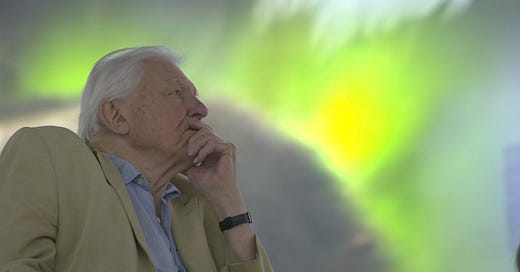


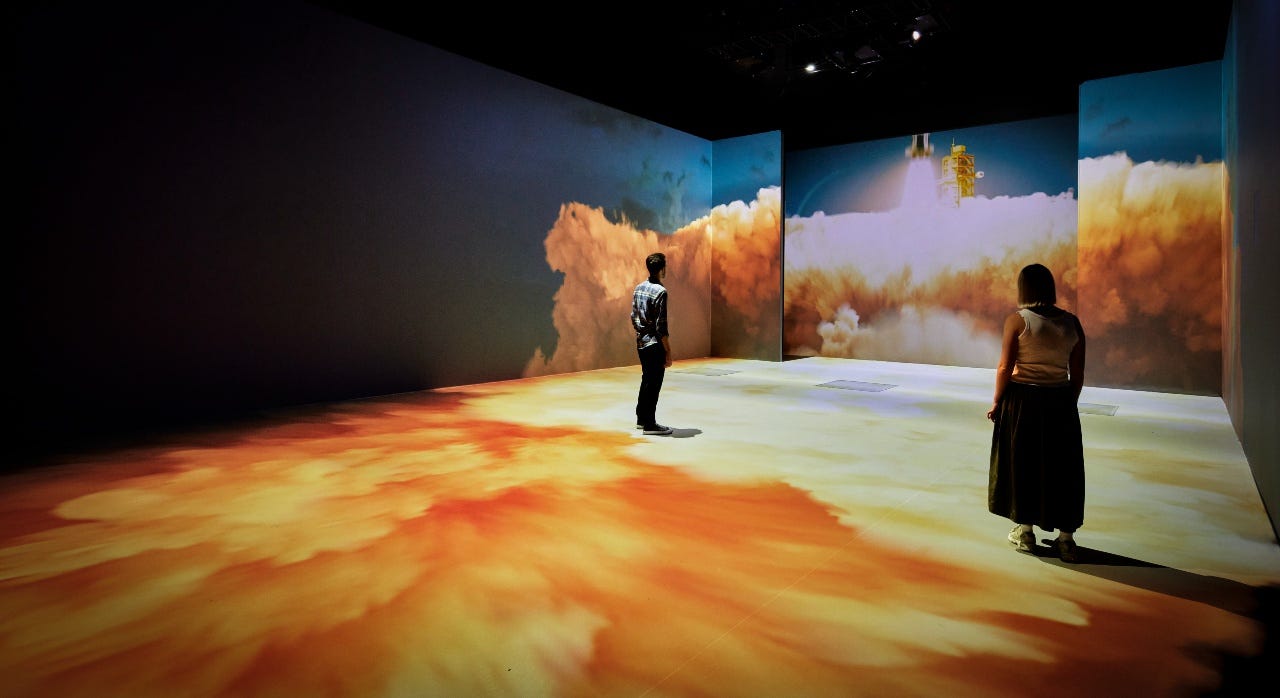
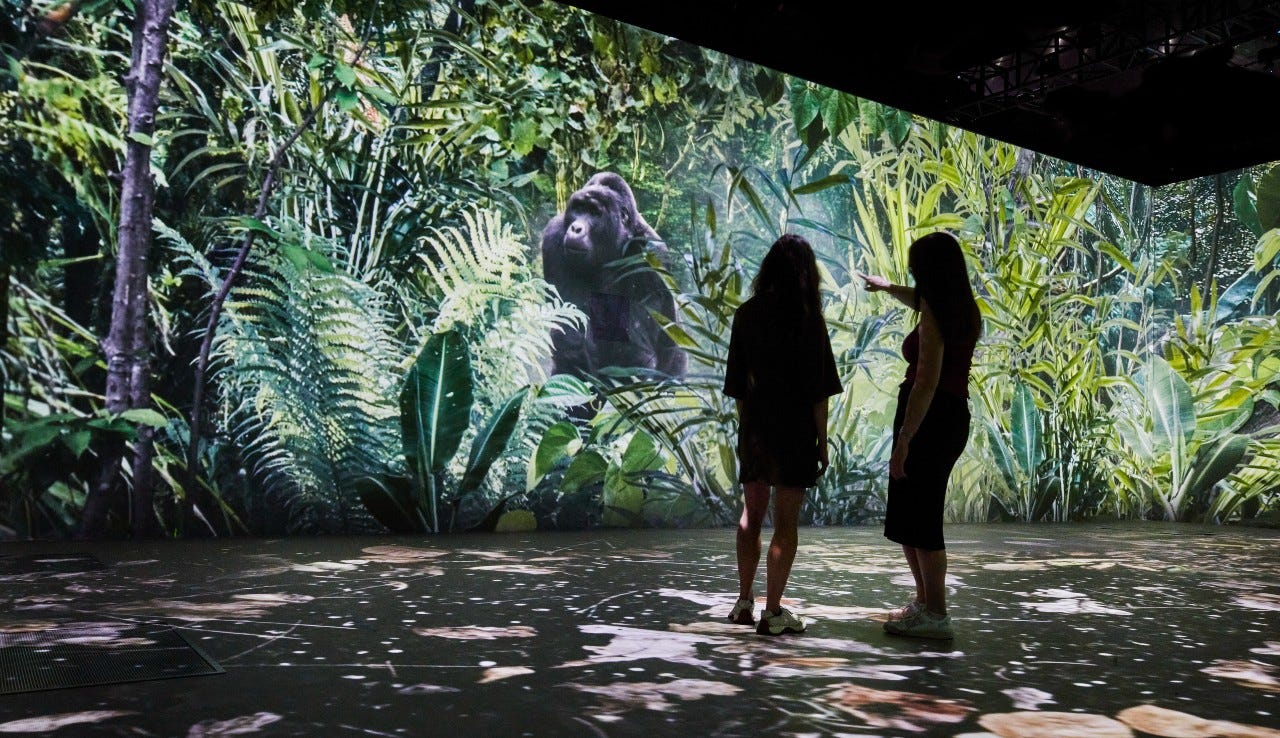
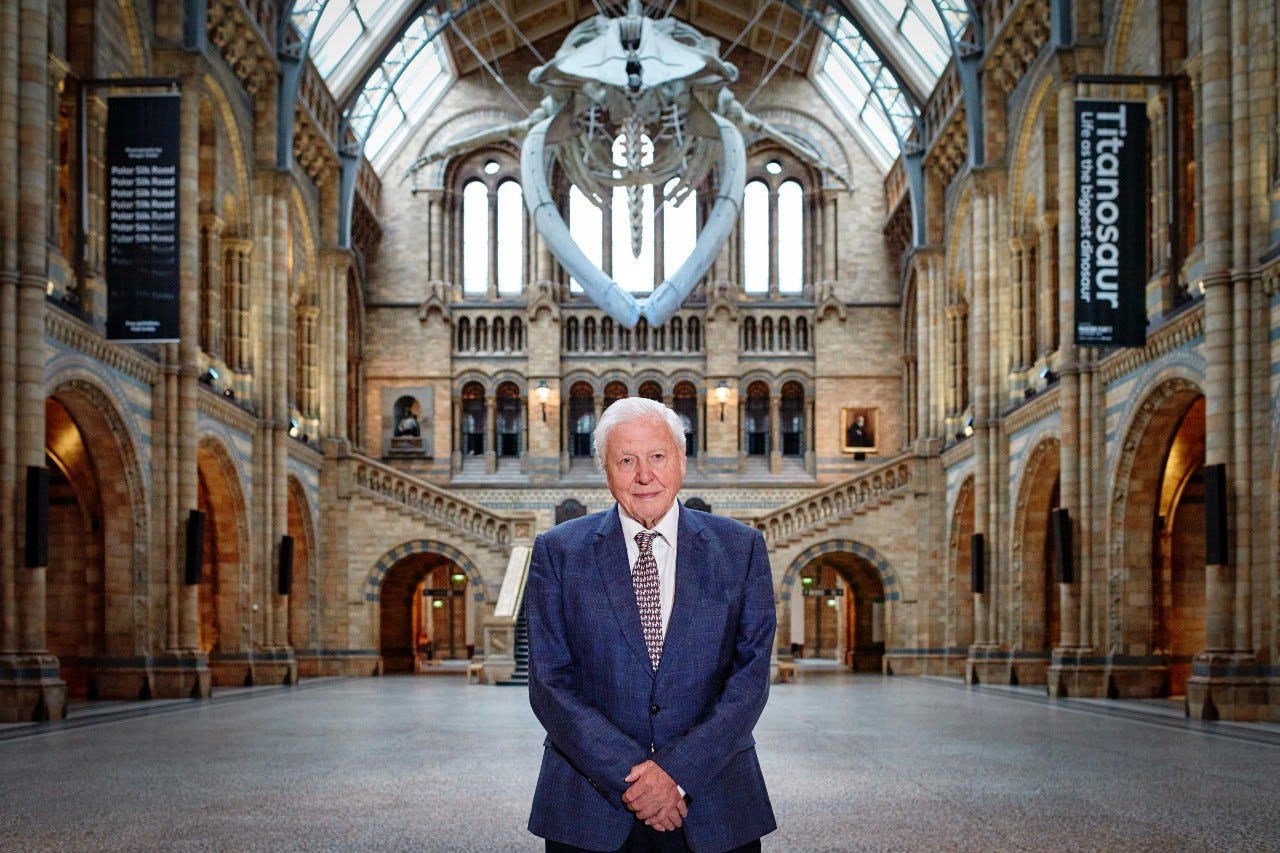
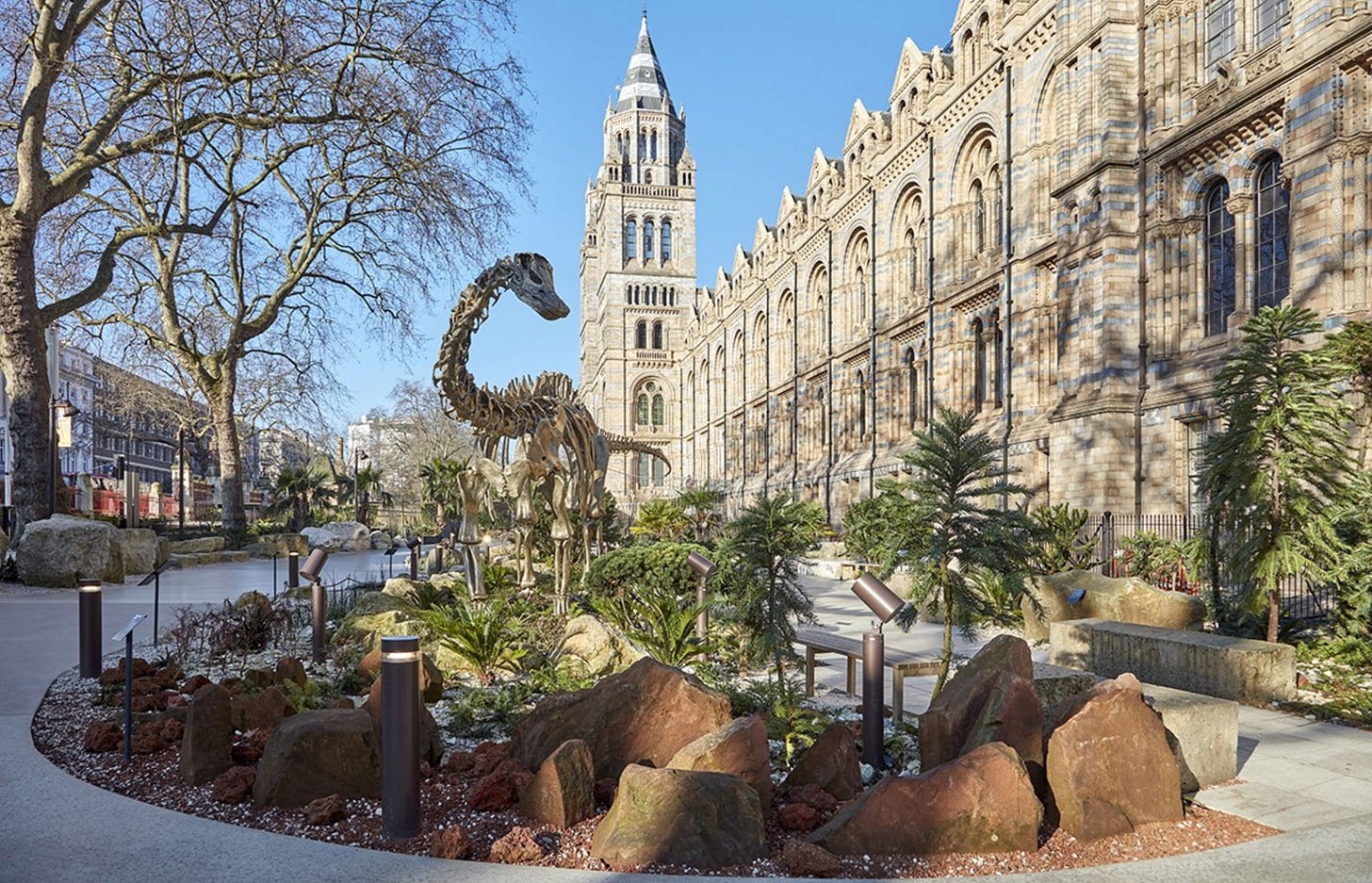
Sounds amazing! Always appreciate what you share. Thanks!
I want him to narrate my life